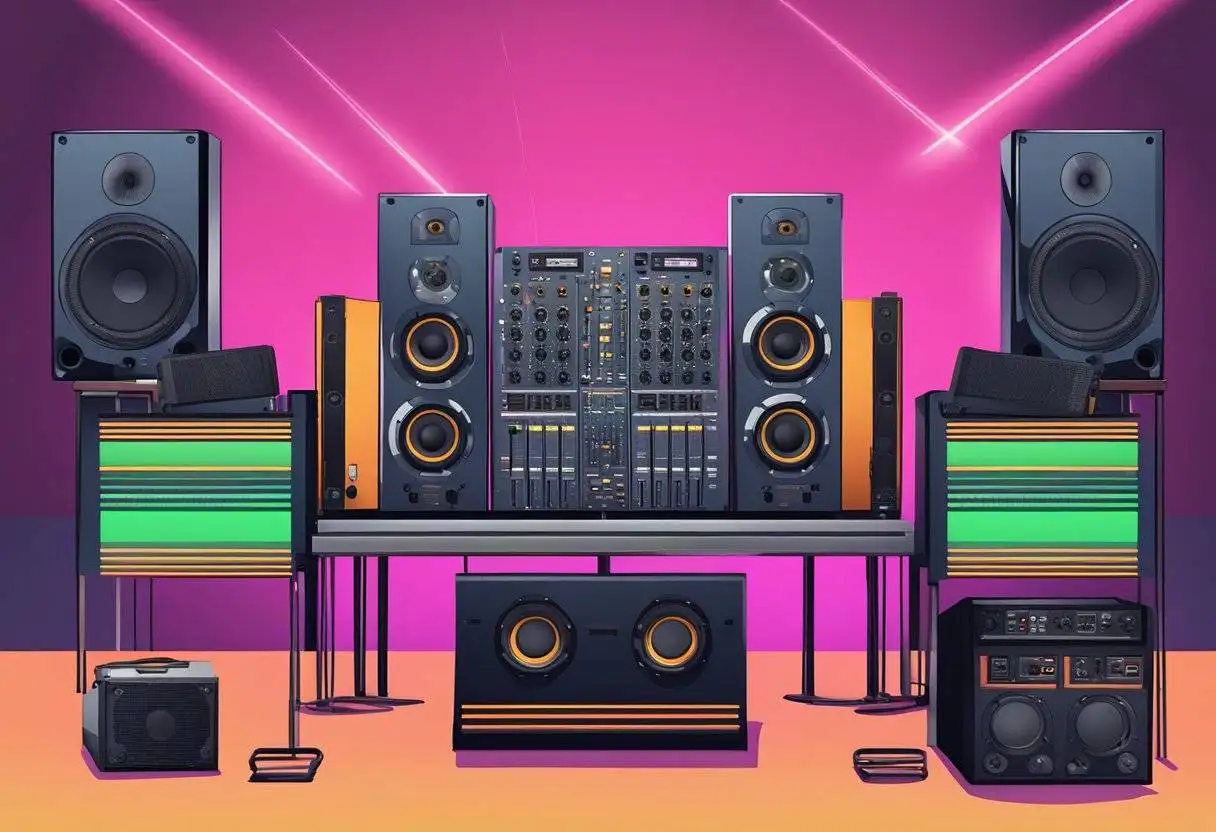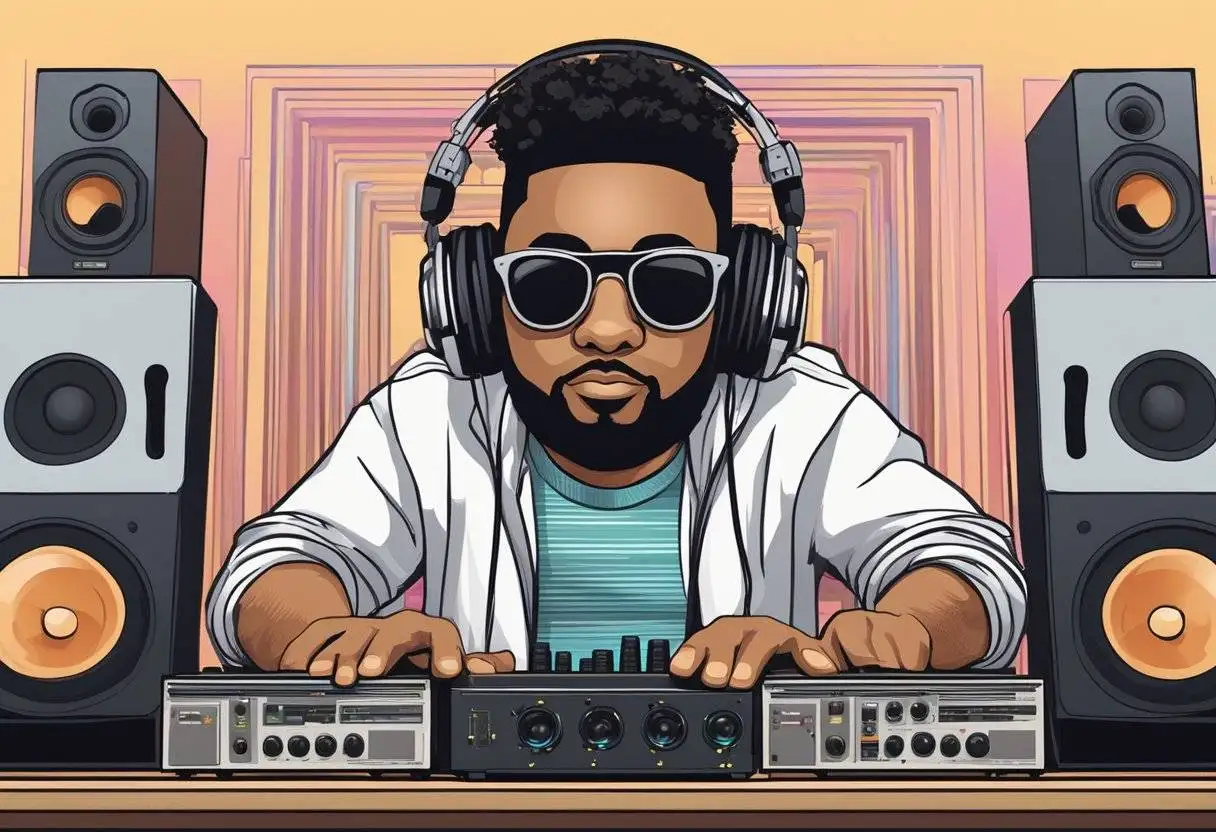When attending a live DJ performance or even watching one online, it’s common to notice an array of speakers facing towards the DJ, commonly known as monitor speakers. These speakers serve a crucial function in the art of DJing, enabling the performer to hear the mix as they create it. Since the main sound system is directed away from the DJ towards the audience, without monitors, the DJ would struggle with delays and sound distortions that could disrupt the synchronization of the tracks being mixed. Timing is essential in DJing, where even a slight delay can cause a mix to sound off, making monitor speakers an essential tool for real-time audio feedback.

Monitors allow DJs to accurately hear the mix regardless of the acoustic imperfections of the venue or the presence of ambient noise. With the ability to adjust the volume independently from the main output, they provide the DJ an intimate and immediate auditory environment critical for beat-matching and mixing tracks fluidly. This control over sound levels is not only beneficial for performance quality but also for the DJ’s hearing, as it prevents the need to overcompensate with excessive volume which can lead to hearing fatigue or damage over time.
Key Takeaways
- Monitor speakers provide real-time audio feedback crucial for DJs.
- Independent volume control of monitors aids effective mixing and protects hearing.
- These speakers help overcome delays and acoustic challenges during performances.
Understanding DJ Speakers and Booth Monitors
In my experience, DJs rely on specific types of speakers within their booth to ensure their performance melds seamlessly with the audience’s experience.
Role of Booth Monitors in DJing
Booth monitors are crucial for DJs like me to hear the music as the audience does, but without any delay. They are the in-booth speakers that face the DJ, providing immediate feedback on the sound that’s being sent out to the crowd. These monitors are essential in environments where there is a significant distance between the DJ booth and the main PA speakers, which can create a lag between the music being played and the music being heard. This immediate sonic feedback allows me to adjust my mixes in real time and ensure sound quality remains high.
Difference Between Booth Monitors and PA Speakers
Booth monitors and public address (PA) speakers serve different purposes at a venue. PA speakers are designed to project sound to the audience and are typically positioned to face the crowd. They deliver the finalized mix that I have prepared, which means their position and settings are optimized for the audience’s listening experience. On the other hand, booth monitors are oriented towards me, allowing me to hear a direct feed from my DJ mixer, often with the ability to adjust their volume independently. Unlike PA speakers, booth monitors are less about enveloping sound and more focused on clarity and accuracy, which is vital for beat matching and monitoring sound quality while mixing tracks.
By strategically using booth monitors, I can confidently perform, knowing that what I’m hearing is exactly what I’m transmitting to my listeners, without any misleading echoes or delays that could affect my mixing precision.
The Importance of Sound Quality and Volume Control
In my experience as a DJ, ensuring exceptional sound quality and meticulous volume control is crucial for any performance. This involves balancing the sound levels between the booth and the master output, as well as optimizing audio for both the DJ and the audience.
Balancing Volume Between Booth and Master Output
Booth Speakers: My aim with booth speakers is to create a zone that allows me to monitor the mix as it evolves. This personal space requires a precise volume level—loud enough to override external noise, yet not too loud to cause hearing fatigue or mask the master output.
Master Output: The master output directs the sound to the audience. I always strive to maintain a balance where the sound within my booth complements, and does not compete with, the master output. It is crucial that the audience gets a sound representation that is true to my mix, both in terms of sound quality and volume.
Optimizing Sound for the DJ and Audience
For the DJ: Precision in sound allows me to make subtle adjustments to the mix. Speakers facing the DJ facilitate accurate beat matching and sound blending. If these are not set to the optimal volume, I risk errors that could ripple through the performance.
For the Audience: My audience should hear a sound that is clear, full, and captivating. This means I may adjust the amplifier gain to achieve the ideal volume through the main system, ensuring the musical experience is immersive yet comfortable. Achieving high sound quality without crossing the threshold into distortion is fundamental.
Maintaining excellence in sound quality and volume control is a balancing act—a responsibility that I take very seriously. It’s the difference between a good show and an unforgettable one.
Equipment and Gear Considerations for DJs

When setting up a DJ booth, my primary focus is on achieving the best sound quality and mix possible. This means careful selection and positioning of speakers and amplifiers, all within my budget and space available.
Choosing the Right Speakers and Amps
I always start by examining the venue or space where I’ll be performing. The size and acoustics of the place guide my choice of speakers. Typically, I look for speakers with a clear sound reproduction across all frequencies. High-quality speakers should have crisp highs, detailed mids, and deep lows to ensure every track hits the right notes with the audience.
Selecting the right amplifier goes hand in hand with speaker choice. The amp should have enough power to drive the speakers without distortion. I ensure that the amplifier’s output matches the speakers’ RMS rating to prevent any damage. For larger venues, I might incorporate subwoofers to deliver the deep bass that gets people moving.
Budget and Size Constraints
Working within a budget is critical. I prioritize gear that offers the best quality I can afford without compromising on clarity or reliability. Investing in durable, professional-grade equipment pays off in the long term.
Size is equally important, especially if I’m frequently mobile. My gear needs to be portable and fit within the confines of the venues I play. For smaller setups, compact speakers with built-in amplifiers provide a balance between size and performance. Here’s a quick breakdown:
| Gear Type | Considerations |
|---|---|
| Speakers | Sound quality, Frequency range |
| Amps | Compatibility with speakers, Power Output |
| Subwoofers | Venue size, Desired bass level |
Keeping in mind the balance between budget and size helps me create an optimal setup that is both functional and feasible.
Techniques and Skills for Effective DJing
In the realm of DJing, precise control over the music is non-negotiable. A keen ear and a deft touch are central to my ability to curate a seamless auditory experience.
Beat Matching and Cueing with Speakers
Beat matching, the cornerstone of my mixing skills, relies heavily on the ability to hear the tracks that are playing out to the audience and those I’m preparing to mix in. My speakers, also known as monitors, face me to provide direct feedback on the beats and rhythms I’m orchestrating. I use them in tandem with my headphones for cueing—isolating the next track—ensuring that I can align it perfectly with the current track.
The process is methodical:
- I listen to the incoming track in my headphones.
- Adjust the pitch fader until the beats align with the track playing out loud.
- Utilize the visual cues from my equipment and the auditory feedback from my monitors for perfect synchronization.
The Interplay Between DJing and Sound Engineering
My role overlaps with that of a sound engineer, focusing on audio quality and acoustic resonance. The speakers oriented towards me allow for real-time monitoring of the sound, helping me adjust levels and EQ settings. This ensures the audience receives an experience free from audio distortions and imbalances.
Subtle techniques include:
- Equalization (EQ): Balancing bass, mid, and treble to prevent frequency clashes.
- Volume leveling: Keeping the audio output consistent and enjoyable.
- Levels are meticulously balanced to deliver the correct energy and emotion intended for every moment of the set.
Frequently Asked Questions

In my experience as a DJ, having the right speakers directed towards me has been crucial for delivering an impeccable performance. Here, I will answer some common questions regarding the use of monitor speakers by DJs.
What purpose do monitor speakers serve for a DJ during performances?
Monitor speakers, commonly referred to as “foldback” speakers, are vital for me as a DJ to accurately hear the music that I am playing in real time. This allows me to adjust my mix and make sure the sound the audience hears is exactly what’s intended. The importance of using monitor speakers is often overlooked, yet it’s critical for maintaining the energy on dance floors.
How does speaker positioning affect a DJ’s ability to control sound quality?
Speaker positioning is fundamental in forming a precise sound image. By placing speakers in an equilateral triangle with my head, I can achieve an optimal listening environment that helps me control the sound quality with precision, ensuring the best audio experience for the audience.
What type of speakers are typically used for onstage monitoring?
For onstage monitoring, I utilize active speakers with built-in amplifiers for ease of setup and reliable performance. These usually feature XLR or TRS connections, which are standard in the industry for their balance and interconnectivity with DJ equipment.
In what ways do foldback speakers enhance a DJ’s performance?
Foldback speakers play a pivotal role in my performance by eliminating the delay and echo that come from relying on the main sound system. This results in enhanced timing and synchronicity when I’m mixing tracks, allowing for a seamless blend that keeps the crowd engaged.
What benefits do DJs experience from having speakers directed towards them?
With speakers directed towards me, I can hear the mix as I’m crafting it without interference from room acoustics. It helps me make precise adjustments on the fly and ensure that my transitions are smooth and the sound levels are appropriate, which are critical for a DJ’s best performance.
What distinguishes stage monitors from the main sound system at a concert?
Stage monitors are distinct from the main sound system because they are designed to face me and provide a clear, direct mix of the music, aiding me in my real-time audio decisions. Conversely, the main sound system is projected outwards to the audience to create an immersive listening experience. This distinction is essential for balancing the audio requirements on stage and in the crowd.
